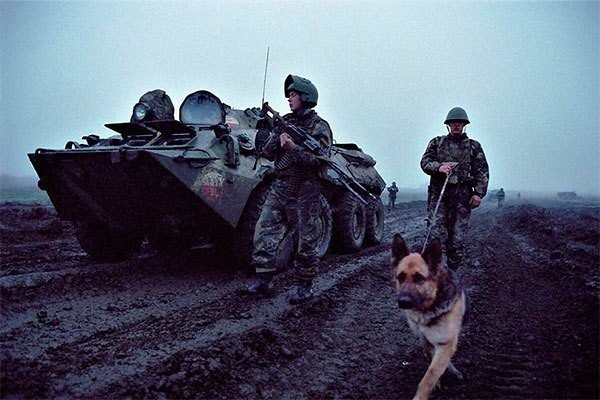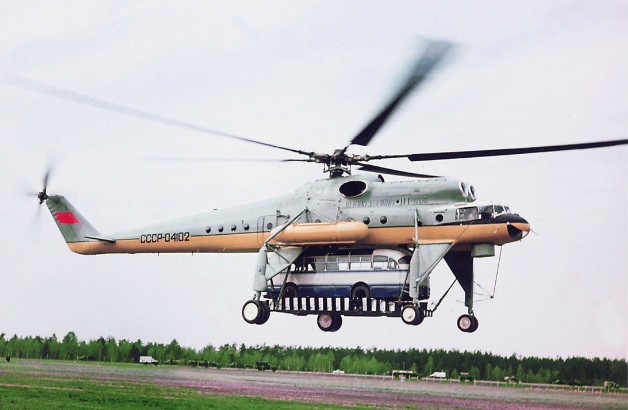
in winter 1958 year on a government decree in the Soviet Union began designing a new machine, which could carry large loads. And it was a new project design bureau Mile called the Mi-10. The new device has been created on the basis of an existing helicopter I-6, but the feature was, that he could carry loads of up to 12 tons over a distance of 250 kilometers.
The Mi-10 – video
In the development of the project was added to the requirement for the transport of huge ballistic missiles. The new model of the helicopter remained completely the same powerplant, as in the previous model. Has changed and the machine control. The greatest metamorphosis occurred with the fuselage of the helicopter. The body of the helicopter was narrow and relatively low, but it had a length in the passenger compartment 16 m, where it was possible to carry 28 passengers.
For longer spans at a helicopter can be installed additional fuel tanks. Loads on the machine can be transported in two ways. First - this is the carriage of containers with missiles, who holds grips with the hydraulic system. The second way - it is shipping on the platform, which is attached to the landing gear.
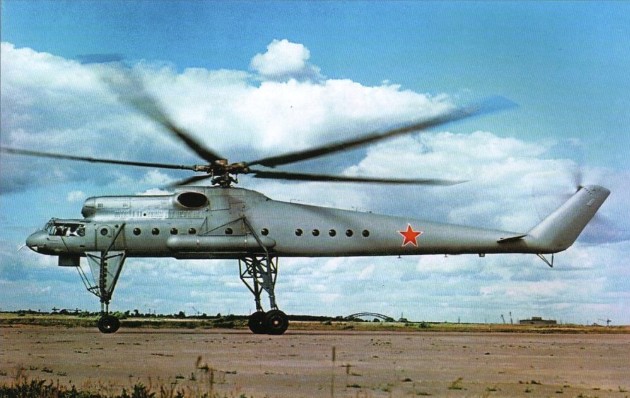
For the first time a helicopter Mi-10 (it was also called the design of the model B-10) off the ground in summer 1961 of the year. In the autumn of next year, this machine has made the record for lifting loads, he was able to lift a weight in 15 tons to a height of more than two kilometers. A year later, the project would generally close, due to the fact that the government refused to transport missiles from helicopters. At the moment abandoned project 64 , it was made only 24 Machines of this model. It is for this reason that the helicopter did not have much authority and was not in demand in the national economy
design Features
Single-rotor helicopter adapted scheme with tail rotor, It has four landing gear. The fuselage is of semi-monocoque construction with a cabin for two pilots in the forward fuselage. The cockpit has a very good visibility in all directions, that allows you to more accurately steer to produce goods. Cargo compartment has dimensions very impressive and is 60 m3. On the starboard side of the helicopter cargo door available, which is installed near the winch, which can be used to lift loads of up to two hundred kilograms. To control the loading and installation of goods under the cockpit installed gondola, by which the pilots have a bigger and better overview.
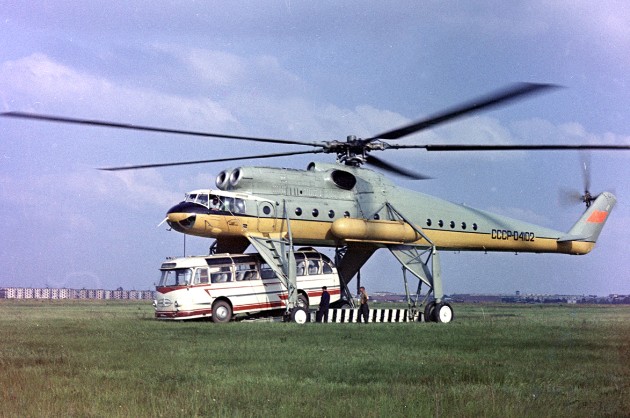
Chassis Mi-10 is composed of 4 racks, which are long and are equipped with shock absorbers. Each leg has two wheels, and track the chassis is 5 meters based in 8,75 m. The tail boom of the machine is equipped with a safety support. The main screw machine completely so, as was the Mi-6 helicopter, only reduce its tilt forward 45′.
Mi-10 is equipped with exactly the same powerplant, Like the previous model. Transmission also remained unchanged. This model has two fuel tanks, the total capacity of which - 9 thousands of liters. For large flight this device is equipped with extra fuel tanks, which can be placed on the chassis and on the sides of the helicopter. Besides, on stages of the machine set additional tanks in the middle of the cargo compartment.
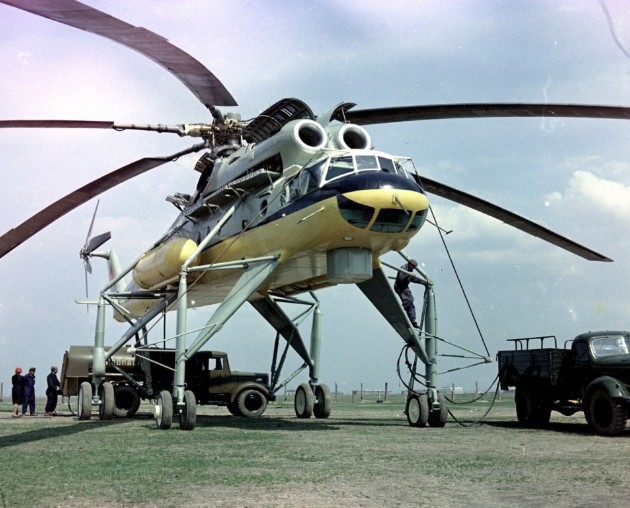
helicopter equipment is exactly the same, how and MI6. The new machine has a three-channel autopilot system. Hard cargo hold during transportation helicopter is equipped with fixtures and clamps, which operate hydraulically, management can be carried out from the cockpit. For continuous monitoring of cargo position machine is equipped with video surveillance system.
General description of the tests and Mi-10
Due to the fact, that all the units were taken from the previous model helicopter, rather than re-designed, a new model of the Mi-10 was ready within one year after the start of development. The tests of the new machine were successful enough, and is the 4th flight was over a distance of 3 thousands of kilometers. The first long flight was also successfully, if it produced a helicopter landing for refueling. Pilots was established fact, that it can be transported by helicopter loads and technique different geometric dimensions by the platform, which is mounted between the uprights chassis.
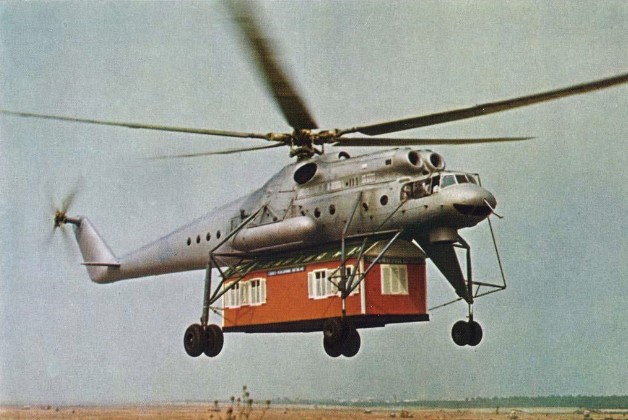
In spring 1961 , the Mi-10 model helicopter crashed en route to Moscow from Kazan, thus killing all, except for the navigator. Failure occurred due to oil pressure in the engine, while helicopter made an emergency landing with a large horizontal velocity. About the crash reported Mile, he and his military commission arrived at the crash site. cause of the accident was the failure of the oil pump, which is mounted in the gearbox. oil system has been modified after the accident on the Mi-10 all subsequent models, Besides, helicopter equipped with soft ropes. They were attached outside the housing, and served as a pilot for the emergency evacuation of the helicopter.
The first performance of the Mi-10 to the general public in the summer of 61 Year parade Soviet Air Force. According to the helicopter was brought geological house, which was installed near the crowd of guests and was used as a point of sale. In September of the same year, the helicopter set a world record: The Mi-10 was able to raise 15 tons of cargo to a height of more 2,3 thousand meters.
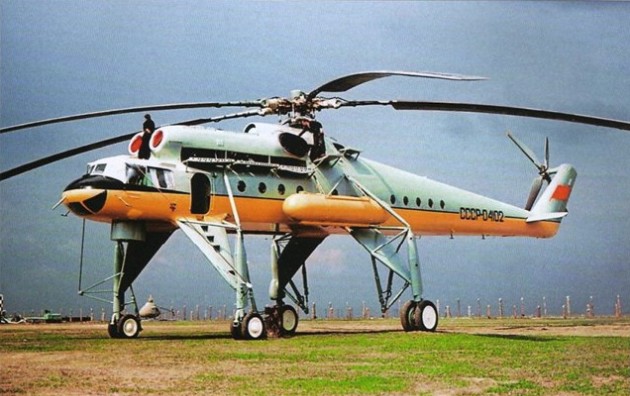
When public trials tested the helicopter to transport a variety of cargo within the helicopter, and using the outer platform and mounts. In tests on the outer platform transported buses, trucks and other equipment, that she could call on the platform. In addition to self-propelled vehicles, helicopter could easily carry standard containers rail. Despite, that most goods, which has been carried not within the helicopter, created aerodynamic problems in flight, helicopter still produces high-quality and fast transportation. Due to the fact, that all trials taking place intensively enough, they ended even earlier, than had been planned by the state commission.
The State Commission has given the green light to the production and flight of this machine. Has been confirmed safe transport of goods, mass which is 15 tonnes. But while all were marked by shortcomings and machinery. Experts have noticed quite a large body vibration at low speeds.
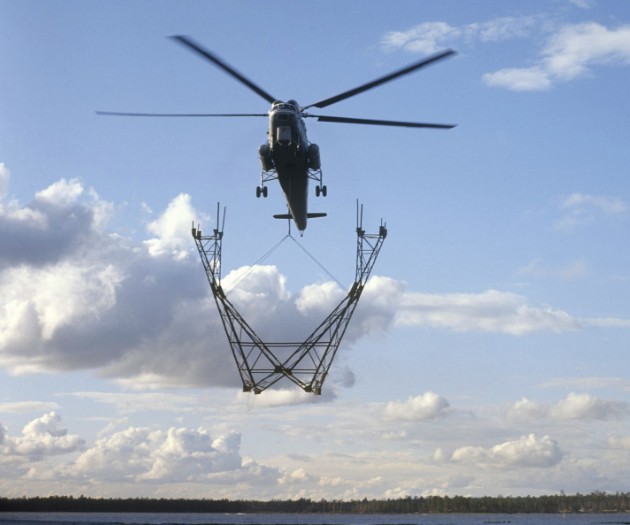
There have also been brought against the claim to set the TV system, by which the pilots allegedly had to watch the loading and implement it. But in reality, this system could only show the fluctuations of goods during transportation, and the loading is almost blind. In order to control loading, the pilot had to look out the window or even get out of the cockpit vents.
One advantage when loading was, that the cockpit is placed very high due to the long landing gear. Due to this, the pilots make it easier to inspect everything during loading. But long landing gear had shortcomings during takeoff and landing, because the helicopter really rocked on his stilts.
Serial Mi-10 issue was adopted in 61 year, but in reality, it was postponed several times. This is influenced by a decline in interest to the military missile and helicopter units and technical malfunctions of the machine. Serial production of the new "ten" began in March 1964 year in the Rostov plant.
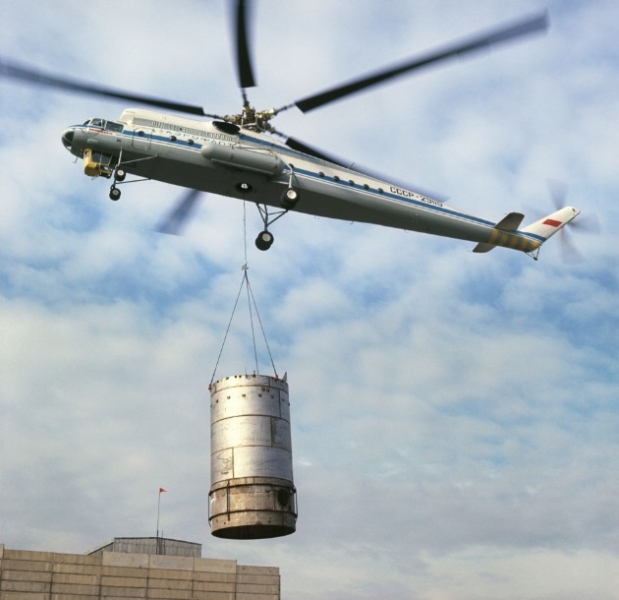
AT 1964 crane helicopter MI-10K - the year a new version was built, Four with a shortened chassis and additional outboard cabin in a gondola under the forward fuselage with a complete set of controls and a seat for the pilot, facing back. During installation, loading and unloading one of the pilots goes into suspended cabin and sits facing the cargo, getting an opportunity to perform simultaneous control of the helicopter and watch the load. The first flight of the Mi-10K was held in January 1965 of the year.
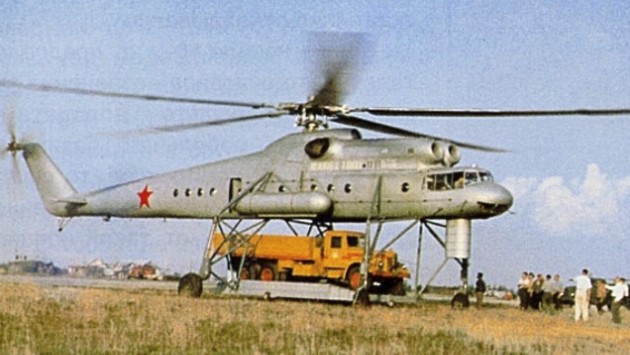
Performance characteristics of the Mi-10
– chief designer: ML. miles
– First flight: 15 June 1960 of the year
– End of operation: 2009
– years of production: 1964 — 1969
– units produced: 44
Mi-10 crew
– 3 man (2 pilot and borttehnik)
Capacity of the Mi-10
– normal: 12 000 kg
– maximum: 15 000 kg (due to the weight of fuel)
– the load on the suspension: 8000 kg
– inside the fuselage: 3000 kg
Mi-10 Dimensions
– Length: 41,89 m
– fuselage length: 32,86 m
– The diameter of the rotor: 35,0 m
– The diameter of the tail rotor: 6,3 m
– Maximum fuselage width: 3,0 m
– Height: 9,9 m (stopped with a tail rotor)
– Area, swept rotor: 962 m²
– The base chassis: 8,285 m
– track chassis: 7,55 m
– The distance from the ground to the bottom of the fuselage (clearance): 3,73 m
All Mi-10
– empty weight: 27 100 kg
– Normal takeoff weight: 38 000 kg
– Maximum takeoff weight: 43 550 kg
– Mass fuel in internal tanks: 8230 kg (maximum)
– Volume of fuel tanks: 10 620 l
Motors Mi-10
– engine's type: 2 × TVD D-25B
– engine power: 2 × 5500 l. from. (2 × 4100 kW)
Mi-10 speed
– full speed: 235 kmh
Cruising speed:
– at weight 38000 kg or less: 220 kmh
– when more weight 38000 kg: 180 kmh
– Skoropodъёmnost: 6,3 m / s (maximum)
Range Mi-10 flight
– 250 practical km
– 695 km Ferry
Service ceiling
– 3000 m
Photo Mi-10
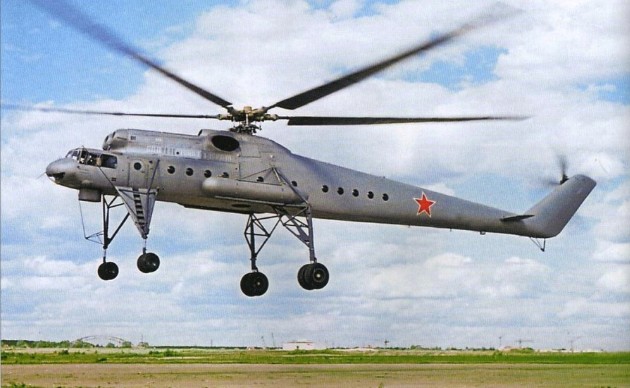
Cabin Mi-10
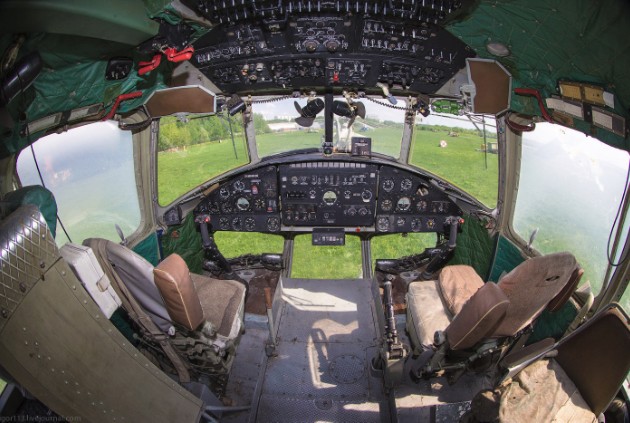
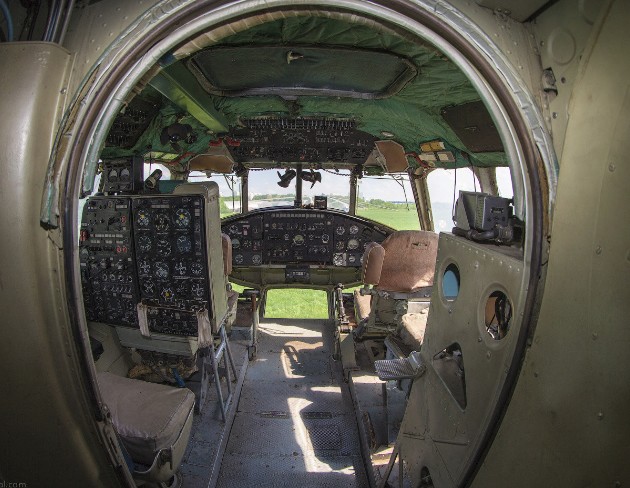
Salon Mi-10
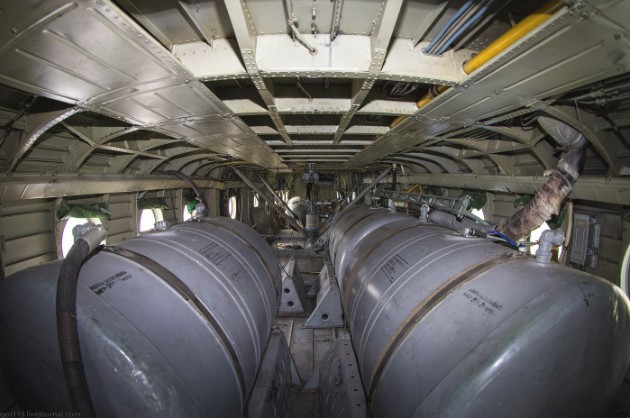
fuel tanks (each 1200 liters)
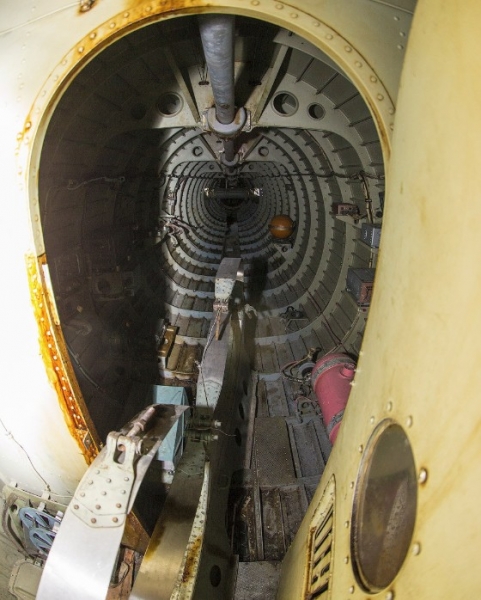
We Hvostovaya beam 10







